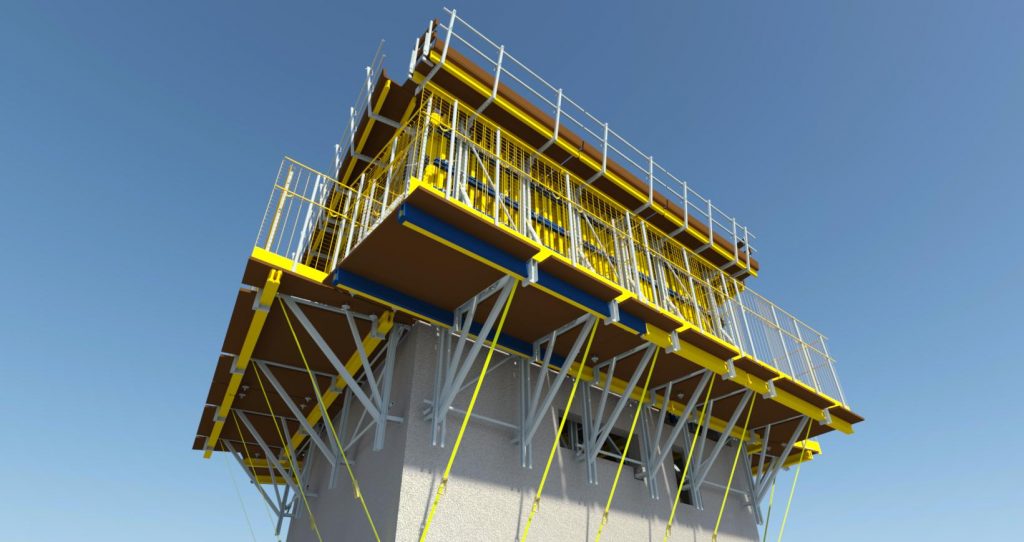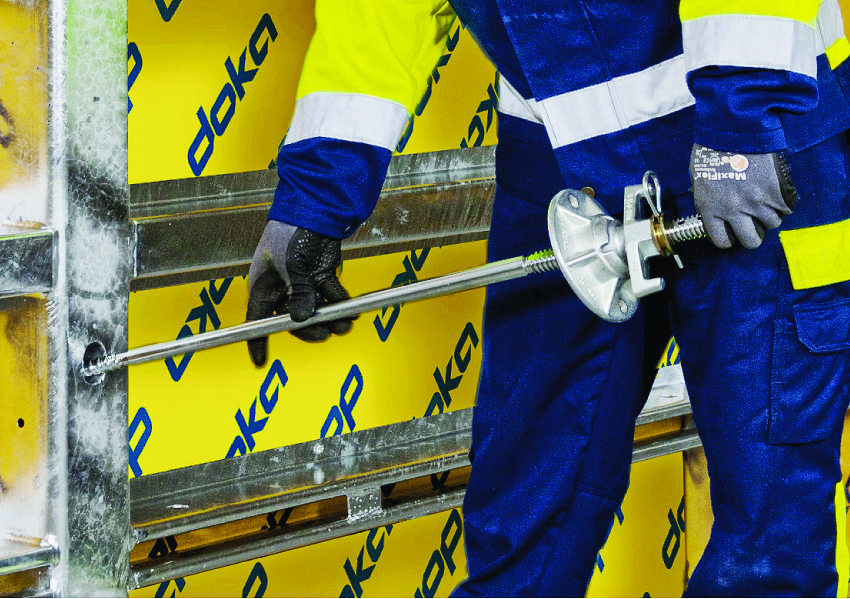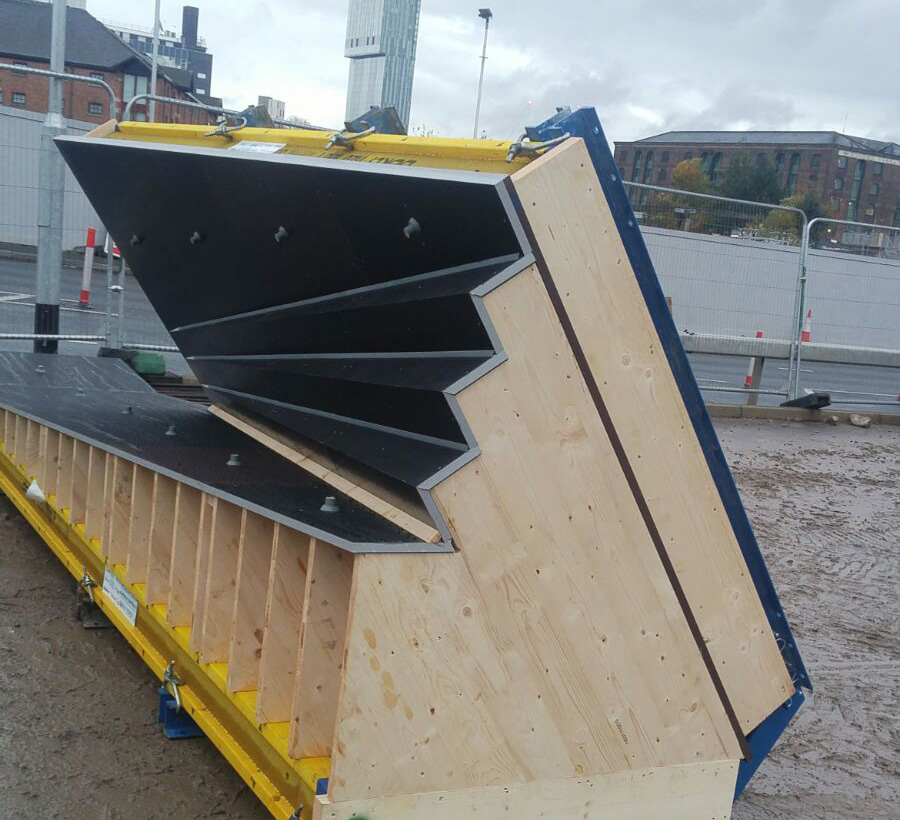Doka UK, 24 June, 2020.- The revival of the world economy will be gradual in the coming months and as we settle into new methods of operation, Covid-19 will certainly leave its mark on the economy over the years ahead. Whilst each country has its plan to promote the opening of all economic sectors, it is vital that the UK government continues to support construction and infrastructure projects in order to drive this recovery. The construction industry in the UK alone employed in excess of 2.4 million people and contributed round 7% GDP pre-pandemic and as such, is an important factor in any national recovery and recession turnaround.
Even before the pandemic impact on the construction sector, there were numerous articles highlighting the lower levels of productivity in construction compared to other more “controllable” sectors such as manufacturing. Now, with the imposed distancing guidelines and resultant limitations, there are even more challenges and demands to improve productivity as the reported efficiency numbers fall even further. With the reduced number of workers typically able to safely work together, it is becoming more important to plan work and use highly productive systems, solutions and “Internet of Things” enabled products, technologies and solutions.
The danger with these demands to work more efficiently is the potential to forget some of the basics of health and safety. For example because teams cannot work too closely to one-another, they may be lifting loads which are designed for more than one person, taking shortcuts or not maintaining and checking equipment being used as effectively as pre-pandemic times.
In this article, we highlight ways in which companies within the construction sector may be able to increase productivity during this time and beyond, with reference to analyses made by manufacturer of construction software, eSUB.
Utilise Software and Technological Resources
By definition, labour productivity is directly affected by technological improvement. As mentioned, productivity rates for the construction industry have dropped behind almost every other sector. The construction industry is also spending less than 1% of its average revenues on information technology.
Through the use of project management software, companies can help track their work more effectively than ever. Project management software can host construction documents such as plans, change orders, request for information (RFIs) or daily reports in one centralised location. Project management software can also lessen the need for employees to spend time documenting files in multiple locations or not documenting them at all then spending hours trying to figure out what previous work was completed. With potential hours saved on simple day-to-day tasks, project management software can help to free up time and in turn, increase productivity.
Construction Planning Based on Data
Construction projects can develop at a swift pace and sometimes it can be challenging to stay organised. However, a lack of organisation can delay a project and ultimately affect productivity rates. Before any project commences, a plan needs to be put in place. The more developed and prepared a plan is, the higher productivity rates will likely be on any given project.
Improving a team’s use of data-driven strategies to drive planning efforts can also increase productivity. One solution, BIM, Building Information Modeling, is a leading strategy among contractors to improve project delivery and Doka have collaborated with many customers to provide formwork solutions using BIM for projects around the world. This has enabled integration of formwork concepts virtually, whilst also boosting productivity on physical construction sites. BIM extracts the data from a project to create a model of every structure before construction commences. This helps also identify any clashes with other workflow tasks and better integrate key subcontractor processes. Doka also enables 3D design of formwork-related structural data in Revit and Tekla, which includes the ability to export 2D plans and parts lists, 4D simulation of construction progress of defined work stages and much more. Thus resulting in less implementation planning effort due to the direct export from BIM and a maximum clarity in the subsequent process.
BIM is also a useful tool in the planning process because it can help predict job costs more effectively than traditional methods as it knows how much building materials should cost. It can also give a better estimate of how long a project should take. When a team understands the workflow before work commences, it can prevent mismanagement, resource misallocation and subsequently can boost productivity.

Improve Communication
Poor communication can have a major impact on productivity in almost all industries. For construction, in particular, it can have a huge negative impact on the final result. Consistent and effective communication between suppliers, construction offices, jobsite supervisors and workers can minimise mistakes and respect deadlines. Doka have a range of tools available to customers to help improve on-site support such as product demonstrators who are still able to provide on-site support in these times, but also have the capabilities of supporting customer questions and support requirements remotely via telephone and video based technologies.
Doka customers can also benefit from using the myDoka customer portal to instantly, and remotely, view delivery tickets, return notes, site inventories, balances and invoices (amongst other things) either on site, in the office or at home. Not only does this enable more efficient planning, but it is also improves information sharing between sites, purchasing departments and Doka itself. Of course, customers can also access product and user information on the customer portal or via the doka.com/uk website As well as improvements in communication, support such as this also provides potential cost savings due to fewer stoppages and faster access to training and administration support.

Safety, Safety, Safety
As introduced at the start of this article, health and safety is still one of the most important considerations that should be taken before any construction project gets underway, and we should not forget the basics in order to work around the new Covid-19 work requirements. The Health and Safety Executive (HSE) reported with reference to Reporting of Injuries, Diseases and Dangerous Occurrences Regulations (RIDDOR) that in 2018/9, in construction there were 4,872 non-fatal injuries to employees reported by employers under RIDDOR and 1,697 (35%) were specified injuries and 3,175 (65%) were over seven-day injuries.
Therefore, it goes without saying, if construction productivity is to be improved, injuries also need to be prevented as much as possible on each construction site. According to the HSE, in construction there were an estimated 79,000 work-related ill health cases (estimated annual average 2016/17 – 2018/19). Furthermore, according to the Labour Force Survey (LFS), in Construction around 2.0 million working days were lost each year between 2016/17 and 2018/19 due to workplace injury (19%) and work-related illness (81%).
Even before the start of this year, it was heavily advised to invest in an effective safety program and train employees about company safety procedures and techniques. Raising awareness about safety will earn the trust of employees, boost their confidence about the safety equipment they’re using, and drive productivity levels – this should not be forgotten just because of the global pandemic.
Invest in Training and Drive More Job-based Experience
One of a company’s most valuable asset is its employees. Thus, if a team is to perform to their highest potential, investment in them and on-site support is a key consideration. Providing a support program for employees will ensure they are knowledgeable, work safer and are more valuable to your company. Additionally, the tools and skills they learn during training will make them more efficient within their role.
Can Doka Help to Boost Productivity Levels on your Site?
Doka have a number of high productivity and “distance-friendly” products available to help our customers fulfil not only the new guidelines, but also help maintain basic safety requirements and help improve worker productivity on your construction site.
Systemised products such as Framax Wall Formwork with the optional Monotec single-sided tying system, can help quickly and reliably prepare form-tie points by just one person. Ties are manipulated from one side of the formwork which saves time, shortens the forming time processes and minimises work.

Digital technologies such as Concremote can provide customers with instant access to live concrete maturity measurements, at any time and from any location. Concremote can help improve labour planning through knowing when to strike formwork, load concrete and undertake post-tensioning activities as well as reducing follow-up repair works and associated costs.

Doka can also help when you have restricted or confined space sites by offering pre-assembly formwork services to free up customers own site labour teams for critical path works and help ensure own distancing requirements at the same time.

Get in touch with Doka today to find out how we can help you to increase productivity on your construction site.
Call us on 01622 749050
or
Email uk@doka.com
Sources:
- Chartered Institute of Building (CIOB)
- eSUB








